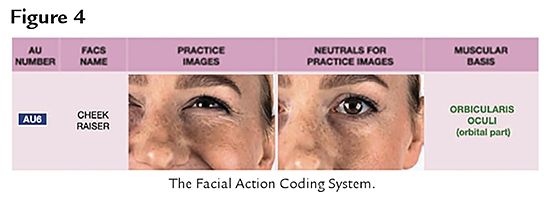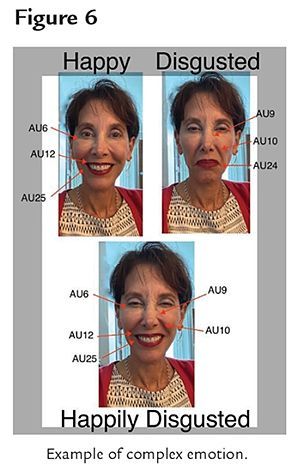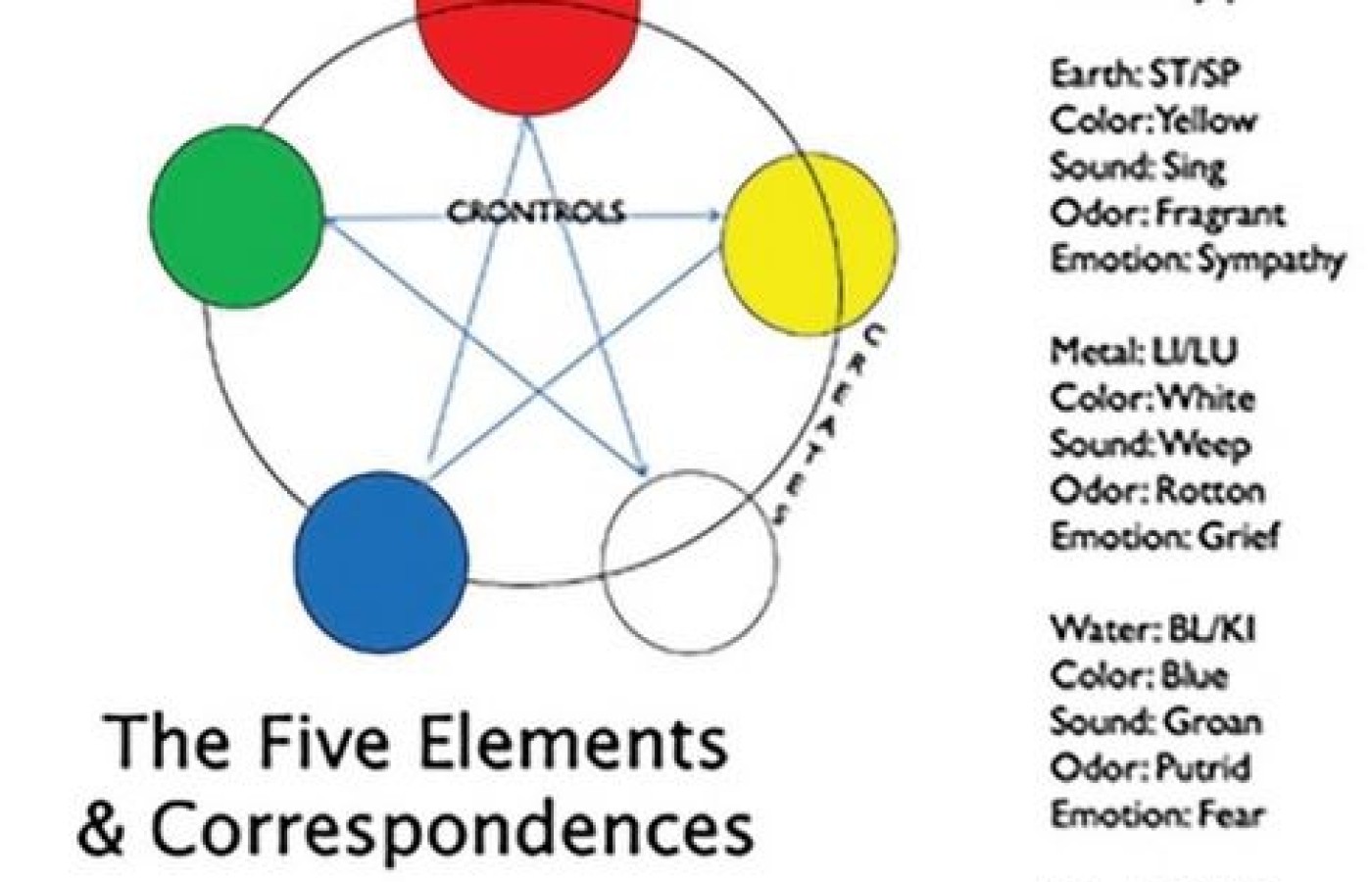Whether you accept it, avoid it or live somewhere in between, insurance coverage has become a defining issue for our profession. Patients increasingly expect to use their benefits, practitioners want to be compensated fairly for their time and expertise, and the system itself remains – at best – fragmented. The encouraging news is that coverage has expanded in meaningful ways. The challenging news is that reimbursement, across the board, remains inadequate.
The Anatomy of Expression (Pt. 1)
The anatomy of expression refers to the relationship between our facial expressions, our muscles, meridians and our inner universe. Our face is unique in its ability to radiate shen, display our emotions, desires and intentions, and provide a window into our overall health. As acupuncturists, we have the skills necessary to use the face as a tool to diagnose and treat underlying conditions that may ultimately lead to disease.
Seven Universal Emotions & Facial Expressions
In the late 1800s, Charles Darwin suggested facial expressions of emotion are the same wherever you go in the world. In the late 20th century, Dr. Paul Ekman traveled the world to research the universality of facial expressions and proved Charles Darwin's theory was indeed correct.
It is now widely supported within the scientific community that there are seven basic emotions, each with their own unique and distinctive facial expressions: happiness, sadness, fear, disgust, anger, contempt and surprise.1 In addition to the seven basic emotions, there are 15 combination expressions: happy, sad, fearful, angry, surprised, disgusted, happily surprised, happily disgusted, sadly fearful, sadly angry, sadly surprised, sadly disgusted, fearfully angry, fearfully surprised, fearfully disgusted, angrily surprised, angrily disgusted, disgustedly surprised, appalled, hatred, awed.2-3
Chinese Medicine and Emotions

According to five-element acupuncture principles, an individual's overall health can be diagnosed through their color, sound, odor, and emotion. Color can be diagnosed by looking at the face, sound by the voice, odor by smelling the nape of the neck, and emotion through expression.14 Looking at the five-element correspondences provides insight into the relationship between emotions, organs and facial expressions. [Figure 1]
Each of these emotions run along a continuum for deficiency to excess; for example: lack of joy to mania; overly sympathetic / worry to lack of sympathy / sympathy reject; lack of anger to rage; grief to inspiration. Looking at the emotions, we can see their effect on qi: Grief and melancholy consume qi. Fear causes qi to descend. Fright disperses the qi. Anger causes qi to rise and causes qi stagnation. Joy slows qi. Worry causes qi stagnation.
The organs are portrayed in terms of their mental, emotional and spiritual functions. When emotions are prolonged, intense or unexpressed, they inhibit the normal flow of qi (Su Wen, chapter 8).
The Feedback System Between the Face and Organs
There is a feedback system between the face, emotions and internal organs. This system is intrinsic to the appearance of the face and health of the internal organs. Studies have demonstrated if a person merely arranges their face into a certain expression, they will feel the corresponding emotion.4
Emotions work from the outside in, as well as the inside out – e.g., happiness may be as simple as "putting on a smile." An individual who cannot or does not express emotions through their facial expressions will not feel the emotion as fully.
An experiment involving the use of Botox to paralyze the facial muscles involved in frowning identified a decrease of depressive symptoms in patients. This demonstrated that facial feedback modulates the neural processing of emotions.5-6
Habitual patterns of expression get lodged in the face. The associated repressed or excessive emotions affect our organs. It is a two-way system with feedback from the face to the internal organs and vice versa. There must be a free flow of emotions to and from the face; hence, facial acupuncture can play an important role in promoting health.
Any impediment to qi and blood flow in the points and channels of the face will translate to diminished function – both physical and emotional. Treating the acupuncture points responsible for specific muscle movements can create ease in the patient by opening up the pathways and returning the muscle to a more normal level of functioning.14
Obstruction of Qi
One of the most common causes of disease is the obstruction of the flow of qi (energetic blocks) caused by unexpressed emotions. Emotions are not a problem in and of themselves; it is our relation to the emotion that can cause our qi to become blocked.
In health, we feel emotions in the appropriate context and do not unconsciously react to the presence of that emotion in ourselves or in another. When we have an unconscious habitual response, or if our chosen response is inappropriate, or so excessive or deficient, as to cause obstruction or depletion, is where the problem lies. One of our jobs as practitioners is to create awareness within our patients of these habitual responses. Using our diagnostic skills and treatment, we can create awareness in our patients and guide them toward balance.
Facial Anatomy
Skeletal muscles create movement through their action on the skeleton, whereas facial (or mimetic) muscles create movements and expressions by pulling on the skin or other muscles (rather than bones); except for the jaw, no bone movement is involved (see Figure 1). this gives the face its unique ability to make expressions. [Figure 2]

The fascial aspect of the face also differs from that of the body. Facial fascia consists of a deep layer which divides, supports and protects deep muscle groups and blood vessels; and a superficial layer, known as the superficial musculo-aponeurotic system (SMAS), which connects the mimetic muscles to the skin and transmits, distributes and amplifies the activity of these muscles – therefore facilitating facial expression.
Anatomically, the SMAS lies inferior to the zygomatic arch and superior to the muscular belly of the platysma. The SMAS integrates with the superficial temporal fascia and frontalis muscle superiorly, and with the platysma muscle inferiorly.4 The elastic and contractile quality of fascia is essential for healthy tissue function; when facial fascia stiffens it, can limit facial expressions. Facial gua sha can be useful to loosen stiff fascial fibers, restoring the full range of facial movements.

Diagnosis: Action Units and the FAcial Action Coding System
In order to determine which muscles are being used and require treatment, we can turn to action units (AU), the fundamental actions of individual muscles or groups of muscles. [Figure 3] The Facial Action Coding System (FACS) is a system to taxonomize human facial movements by their appearance on the face, based on a system originally developed by a Swedish anatomist named Carl-Herman Hjortst. It was later adopted by Paul Ekman and Wallace V. Friesen, and published in 1978.10

An AU is a set of facial muscle articulations that results in a unique visible image feature. For example, when the frontalis muscle contracts, there is a visible rising of the inner section of the eyebrows, and this is denoted AU 1.

AU 6 draws the skin toward the eye from the temple and cheeks, as the orbital portion of the orbicularis oculi muscle constricts it. The consequences: a) narrows the eye aperture; b) bags or wrinkles the skin below the eye; c) pushes the eye cover fold down; d) raises the cheek upward; and e) potentially causes crow's feet ("laugh lines") or wrinkles.
As mentioned, the FACS is a system to classify human facial movements by their appearance on the face. [Figure 4] When smiling, you would utilize the cheek raiser muscles, which involve AU 6, AU 12 (lip corner puller) and AU 25 (lips part).7 [Figure 5]
For example: To treat expression lines involved in smiling, you would treat orbicularis oculi: GB 1, BL 2, ST 2, Qui Hou, Jiangming, TE 23, Yuyao, needled upward; orbicularis oris: two motor points: LI 19, located halfway between ST 4 and Ren 24; zygomaticus major: SI 18; and depressor labii inferioris: Jiachengjiang.
Action units can also be used to diagnose and treat complex expressions of emotion, such as: happily surprised – happily disgusted – happy fearful. [Figure 6] For each of the other basic emotions, the diagnosis and treatment methods are designed based on using the different AUs involved.
Editor's Note: Part 2 of this article is scheduled to appear in the December digital issue. Complete references to the citations in both parts accompany part 2.



